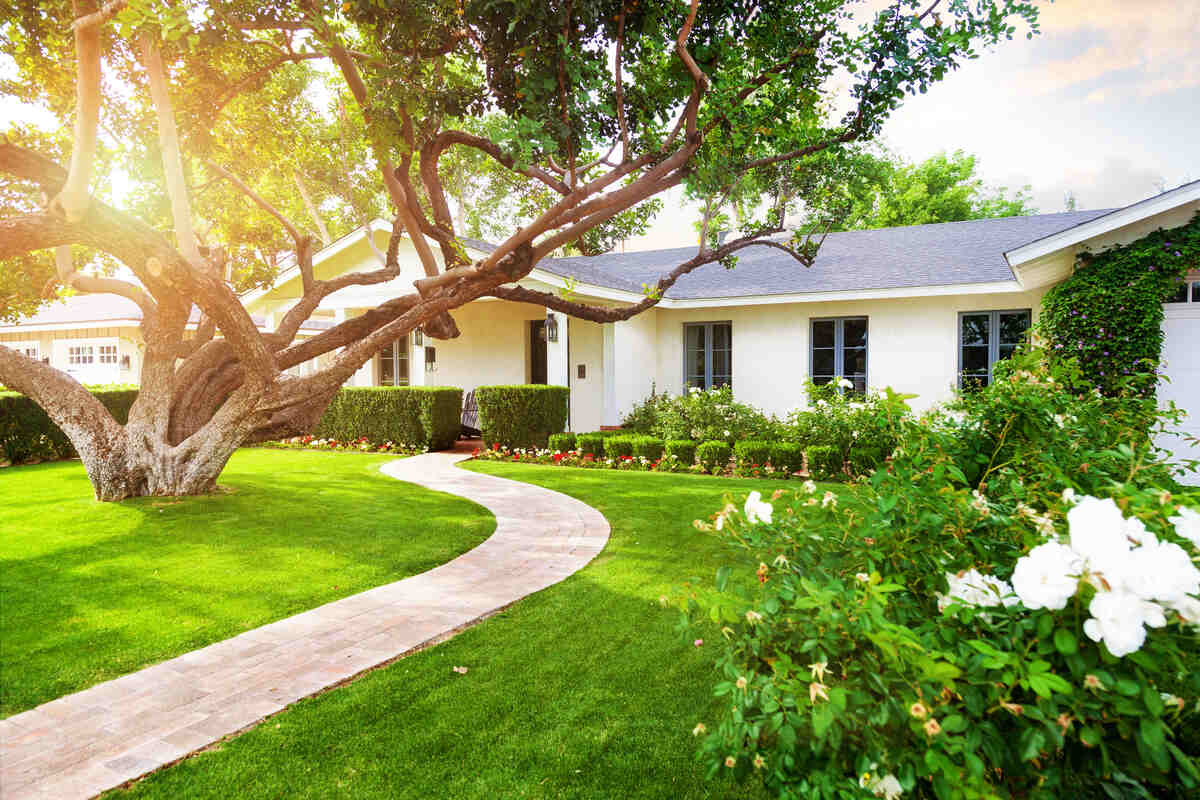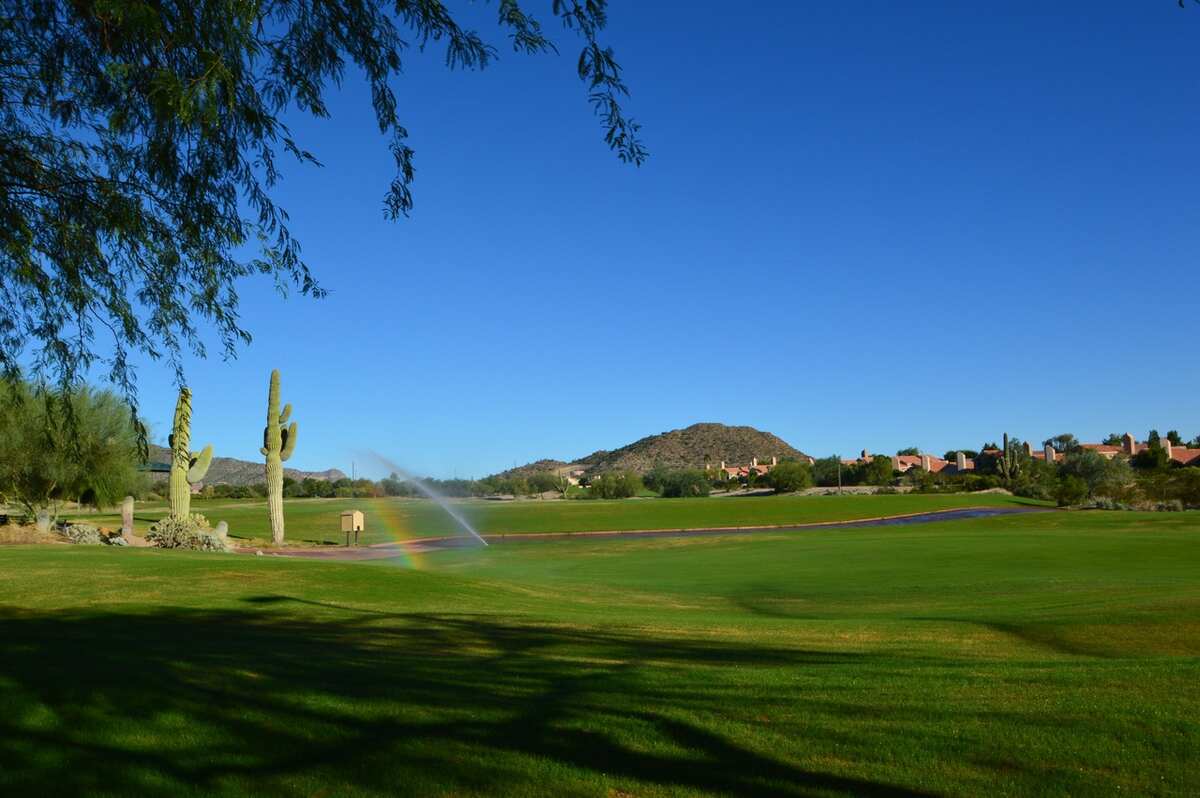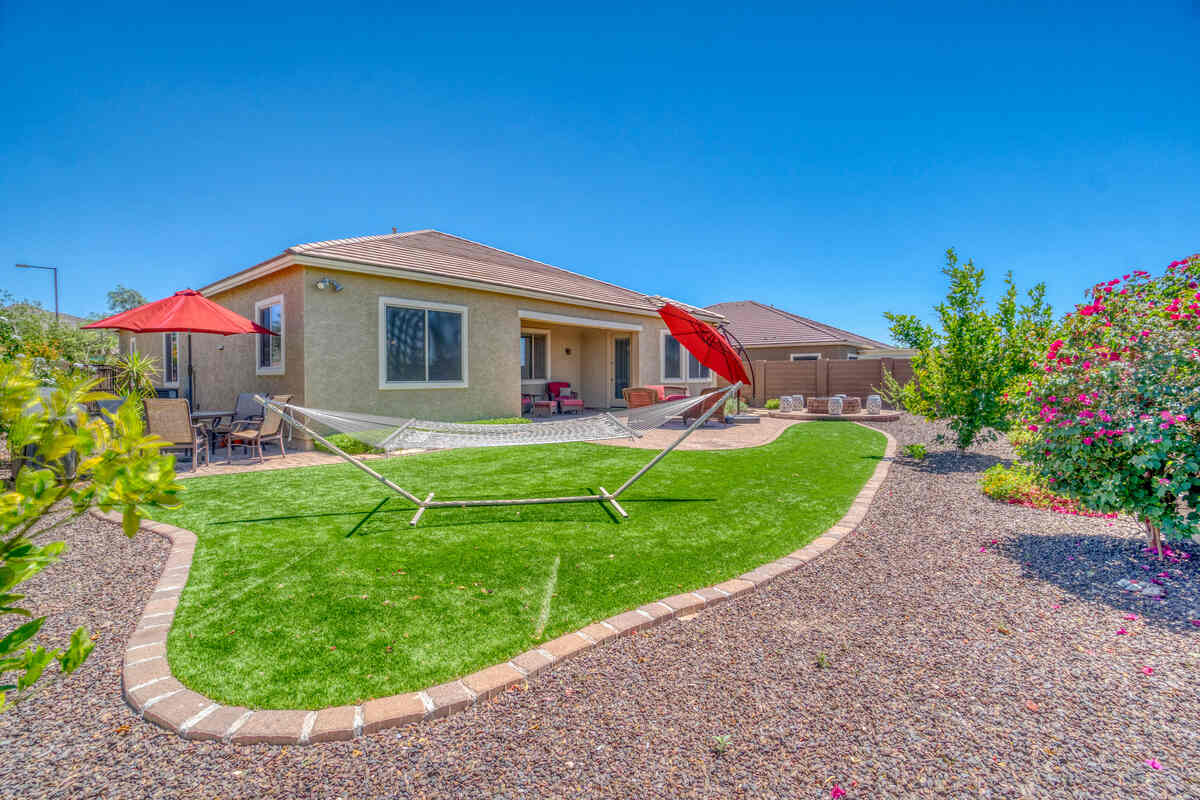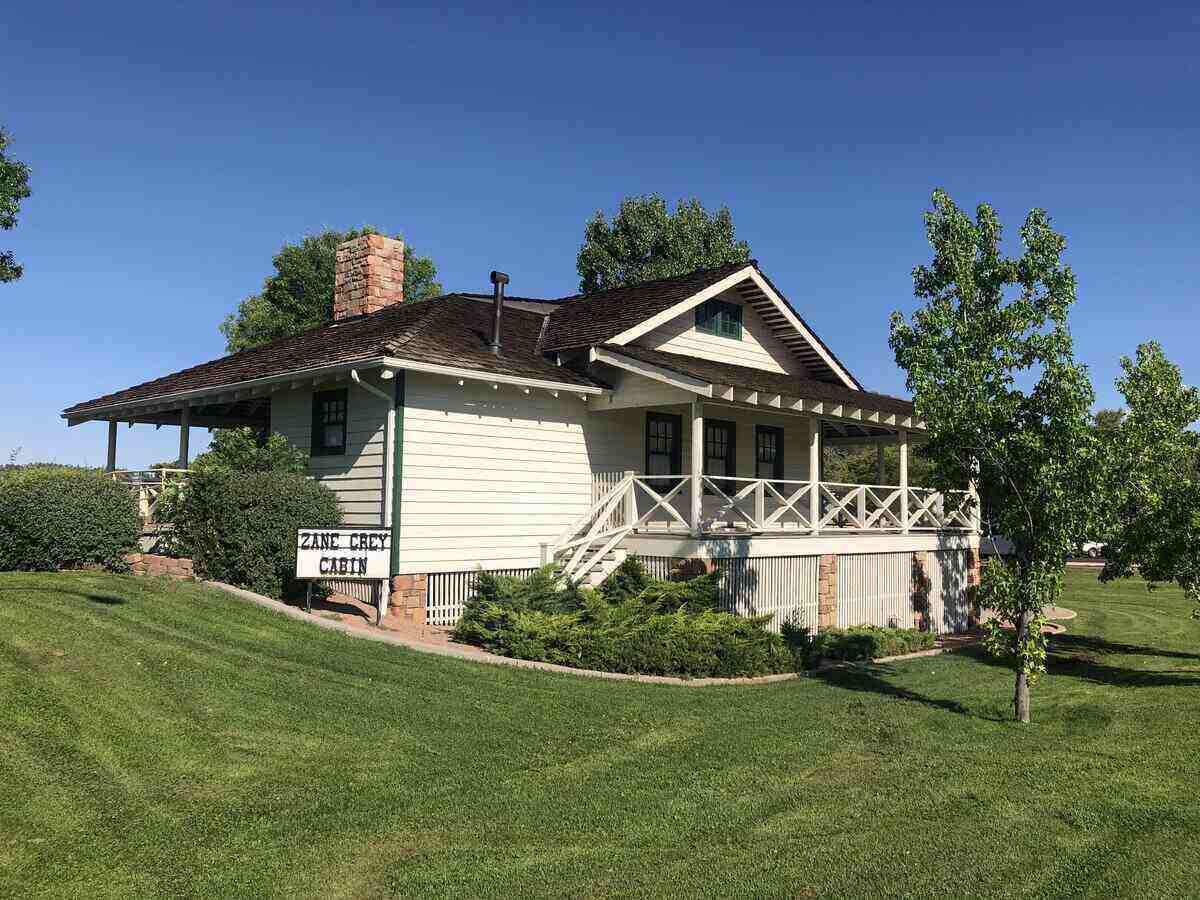
Knowing when and how to plant winter grass in Arizona is the key to a successful lawn year-round. Summer grasses thrive in July’s baking heat but can’t handle cold spells in late fall. For local lawn owners, that’s not a problem – it’s a challenge: to grow the best winter grass in Arizona over their summer Bermuda.
Overseeding is almost a tradition here. It’s easy enough to try DIY if you know when and how to grow cold-season grasses in the Grand Canyon State. And we have the top local tips for you! From choosing the best ryegrass seeds and scalping your Bermuda lawn to watering and fertilizing your lawn in the winter, find everything you need to know in this guide.
Note: Overseeding with winter grass is popular in Arizona, so most local lawn care companies offer this service. You can hire a lawn care professional if DIY is not your thing.
Winter Overseeding in Arizona
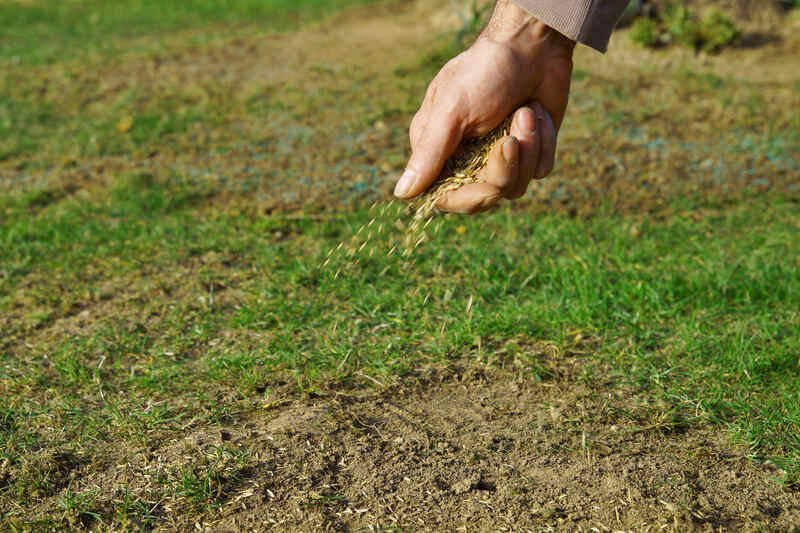
Overseeding is spreading grass seed over a lawn that already has turfgrass planted. In Phoenix, Mesa, Tucson, Yuma, and across the central and southern deserts, the main purpose of overseeding is to have a green lawn during winter months.
The most common warm-season grass planted in Arizona is Bermudagrass. Bermuda has excellent drought, heat, and traffic tolerance. This beautiful light-to-dark green grass stays lush with proper summer care from May to September. It gracefully faces long heat waves and even the occasional monsoons and haboobs.
But it can’t resist the cold.
By November, Bermuda lawns are dormant and turn a not-so-attractive tan to brownish color. Underneath the soil, the grass is well and waiting to sprout back in the spring, but in late fall and winter, you don’t have much of a lawn to enjoy.
So, Arizonans overseed each fall with cool-season grasses, typically ryegrass, to maintain that lush, green lawn through winter.
When to Plant Winter Grass
The best time of the year to overseed is when the nighttime temperatures go below 65°F consistently. In the Apache State, this typically happens the first two weeks of October. You can seed earlier or later but with some consequences:
- When you overseed too early in the fall, Bermuda is still strong and thriving, and the ryegrass will have a tough time competing. It can grow slower and thinner.
- Overseeding in late October or November exposes the young seedlings to low temperatures too soon and can lead to damaged grass.
Also, see our guide to planting grass in Arizona year-round for a summer and winter grass planting schedule.
Best Seeds for Winter Grass in Arizona
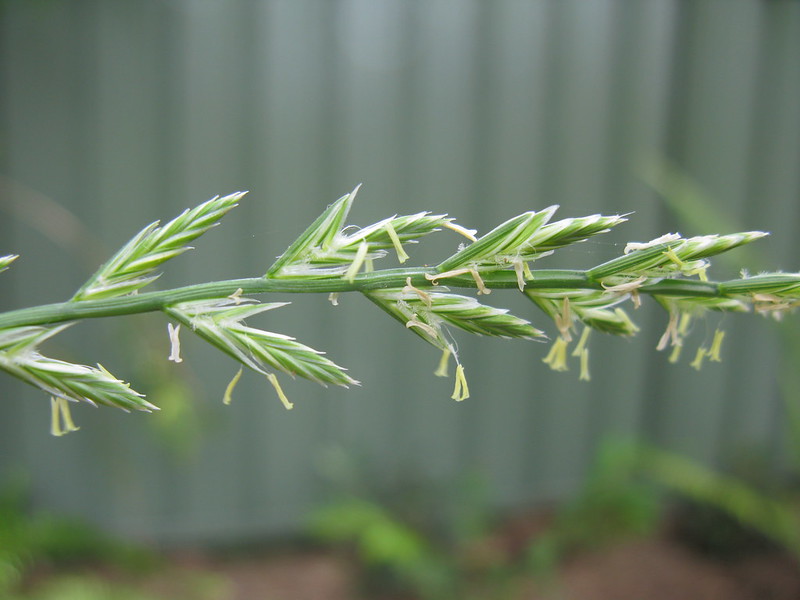
Valued for its fast germination and seedling growth, ryegrass is highly used across the United States in pastures, home lawns, golf courses, and athletic fields.
It is the best grass to overseed in the Sunset State. Ryegrass tolerates Arizona’s alkaline soils and drought, recovers well from foot traffic, and is a low-maintenance grass that simplifies winter lawn care tasks.
If you spread it in late September or early October, it will take over the greening job from Bermuda by mid-November, covering your yard in a thick, lovely mass.
Winter ryegrass dies in late May or early June. When the epic Arizona heat strikes, it makes room for Bermuda to spread its green again under the stunning desert sunsets.
Bermuda + ryegrass = the perfect match!
Three Steps to Overseed Like a Pro
Overseeding is quite a straightforward process if you have all the details clear in your mind. Here are the three main steps you need to go through to overseed your winter lawn:
Get the Time Right
With overseeding, timing is everything. Add it to your October lawn care schedule and monitor the temperature. When it goes below 65°F for a few nights, it’s time to spread rye seeds on your lawn.
Prepare the Lawn for Overseeding
Your main goal is to ensure the ryegrass seeds reach the soil and have the best conditions to germinate and grow healthy seedlings. To achieve this, do the following:
- Cut the Bermudagrass shorter. At the beginning of October, your lawn still has some tall and green Bermuda cover; you must thin it. Bring it to ¼ or ½ inches tall by slowly lowering the lawn mower blades during the last two to three weeks before overseeding.
- Get the grass clippings off the lawn. You need the soil accessible to seeds. Add the clippings to your compost bin to make the most of their valuable nutrients.
- Reduce watering. It will help Bermuda go into dormancy faster.
- Dethatch the lawn. Sometimes thatch needs more than a manual rake. If so, rent a power rake from the local home improvement store to loosen and remove the thatch layer. Work in one direction, then perpendicular, and rake up all the debris.
Before overseeding, your lawn should be mostly brown, with ¼ to ½ inches tall stubble and “runners” spreading across the yard in a network. Here and there, you should see bare soil.
Buy the Seeds and Spread on the Lawn
Arizona nurseries typically sell two main types of ryegrass:
- Perennial ryegrass
- Annual ryegrass
Most homeowners go for the perennial rye for their lawns. It has finer and darker green blades that grow thick and dense, often making the winter lawn look better than the summer one.
Annual rye grows equally fast but has a lighter green color. It is also less expensive and dies earlier in the spring, making the transition to Bermuda easier.
Choose whichever you like most for your lawn.
How do you know how much grass seed to buy? The average amount is 12 to 15 pounds of seeds per 1000 square feet of lawn or 1.2 to 1.5 pounds per 100 sq. ft. It depends on the lawn quality you expect and the mowing height you keep. To be more specific, you need the following:
- 12 pounds per 1000 sq. ft. if you plan to keep the rye 1 to 2 inches tall.
- 15 pounds per 1000 sq. ft. for home lawns maintained at 0.5 to 1 inch tall.
It is essential to spread the grass seed uniformly throughout the lawn. While you can do this manually, we recommend using a broadcast spreader and making two applications:
- Split the seed amount in half.
- Load one half and make the first application going forward and back on the lawn.
- Load the other half and spread perpendicularly to the first application.
How to Maintain the Winter Lawn After Overseeding
There’s more to do after spreading the grass seed. Here is when and how to fertilize, water, and mow for the best shot at growing new grass successfully.
Apply a Starter Fertilizer
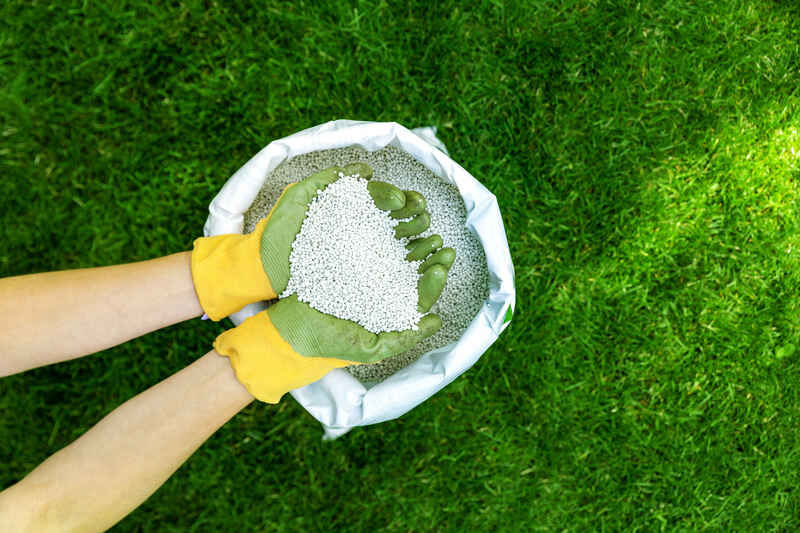
Your first task after spreading ryegrass seeds is to ensure the proper plant food. Apply a starter fertilizer. The best formulas for Arizona grasses are:
- A 6-20-20 fertilizer (6% nitrogen, 20% phosphorus, 20% potassium)
- A 15-15-15 fertilizer (15% nitrogen, 15% phosphorus, 15% potassium)
Read and follow the instructions on the package carefully and apply the fertilizer uniformly with a spreader.
Cover With a ⅛ to ¼ Inch Layer of Mulch
Not mandatory but useful, a layer of organic mulch helps the soil retain moisture longer. It also keeps it warmer, speeding up germination. It becomes essential if:
- Your irrigation system is broken, and you can’t water the lawn often enough during seed germination.
- The sprinkler system timer doesn’t allow 4 to 5 sessions a day.
- Fall temperatures are lower than expected.
Keep the Seedbed Moist Until Germination
Grass seeds need constant moisture (not soaking) for seven to ten days to germinate. In the dry Arizona climate, this is all on you. Here’s how to do it:
- Water 3 to 5 times daily during the first seven to ten days. Apply water for 2 to 5 minutes each time or long enough to wet the top 1 inch of soil. Water mainly in the morning and evening, and watch out for puddles.
- When the grass is about ¾ to 1 inch tall, reduce watering to 2 to 3 times a day.
- After another two weeks, start watering once a day.
- Slowly reduce watering within the next two weeks to once every two days, then once every three days.
- When the lawn is established, set a watering schedule to irrigate once every 5 to 7 days.
Mow When Ryegrass Is About Three Inches Tall
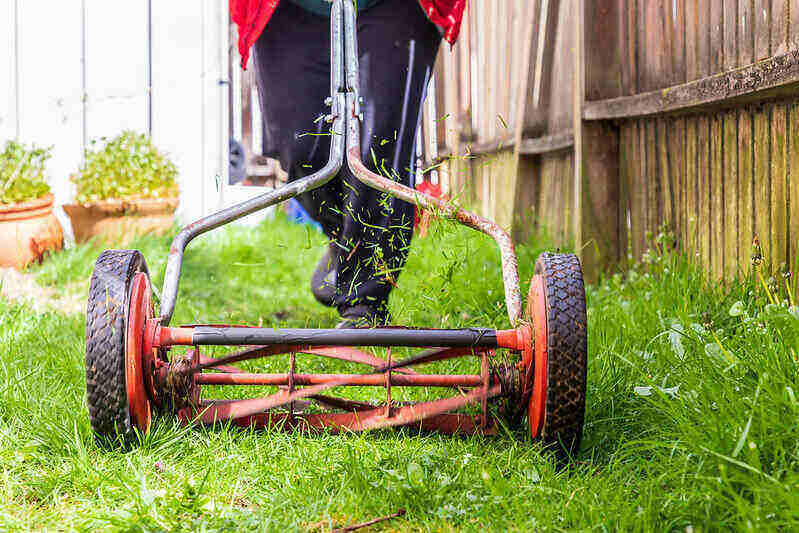
Wait until the grass reaches about 3 inches in height before mowing the new lawn. Cut the grass about 2 ½ inches tall.
Keep ryegrass at 1 ½ to 2 ½ inches throughout winter and cut a maximum of ⅓ from its height each time. You’ll need to mow the lawn once every other week or even less during winter. But even so, you can consider hiring a pro to get this chore out of your hair.
Fertilize Established Turf Every 6 to 8 Weeks
A healthy lawn needs nutrients. Continue fertilizing the lawn every 6 to 8 weeks to keep the root system strong and the blades green and thick. Use a regular fertilizer with slow-release nitrogen and iron.
FAQ
Overall, the best winter grass to seed in Arizona is perennial ryegrass. It has a darker green color than annual ryegrass, giving the lawn a golf-course-like appearance.
Feed your winter grass every 6 to 8 weeks during the cool season to keep it healthy, green, and thick.
Set your sprinkler system to water the ryegrass lawn about once a week during the cold season and early spring. Stop watering in April to allow ryegrass to die off before Bermuda grows back.
It takes about a month for your winter grass to grow in Arizona. Seeds need seven to ten days to germinate, and seedlings require another ten to fourteen days to grow to their regular mowing height.
If you want plants in your garden that can survive both the intense summer heat and the cold desert winters of Arizona, your best bets are Arizona native plants, which are adapted to the local climate. Find several local native species in our list of the best plants for Arizona heat.
Get Your Arizona Lawn in Shape For the Cold Season Today!
Once the warm season is over, you can put your lawn care tools to rest and take your mind off your yard. Or, you can overseed with ryegrass and enjoy an amazing, green, thick lawn all winter. Contact a lawn care professional near you and get your lawn in shape for the cold season! Whether you’re in Phoenix, Mesa, Scottsdale, Glendale, or any other Arizona community, LawnStarter has the best lawn care specialists to do the job.
Main Image Credit: Richard N Home / Wikimedia Commons / CC BY-SA 4.0
